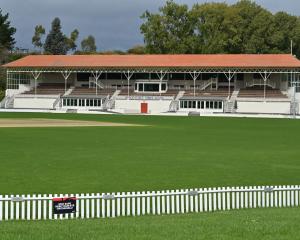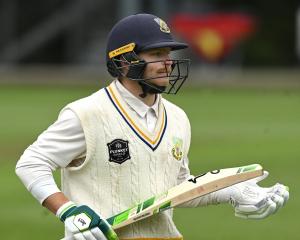Has the game really caught on at the highest level? The Black Caps have played their nearest rival — Australia — just twice in the last eight years and seven times in total. That number will climb to eight tonight when the sides meet at Eden Park. But can anybody remember the previous seven?
The debut fixture in 2005 was notable only because the Black Caps donned beige and Hamish Marshall was sporting the best afro since the Jackson five. Both sides laughed their way through the encounter.
These days twenty20 is no laughing matter. An IPL gig is the money shot over midwicket — the shortest route to unbelievable riches. Players have hung on past their use-by dates to collect the cheques. And current players, whether suited to the format or not, want to been seen on the international stage if for no other reason than to increase their marketability. No-one will admit that, of course. They are more likely to thump their chest and spout some puff about the team coming first — puhlease.
But how often do we hear how so-and-so needs a break from the hectic schedule of international cricket only for said exhausted and exploited cricketer to pop up in a T20 league soon after? Arriving late for a tour is a privilege extended to some of our higher-profile players in the past so they can ride on the Indian cash train a little longer.
No-one would begrudge players maximising their salary while they can. But if you are a paid mercenary then own it.
International twenty20 cricket has become a pathway to the IPL and other lucrative T20 tournaments. It is a means, not an end.
Domestic twenty20 tournaments will increasingly lure players away from the international game, just as we see with football.
It is hard to see how the ICC could take more of a lead on the issue.
How do you create an international window for a global game which is played outside in the summer? Twenty20 has had both a positive and negative impact on longer formats of the game, though. Fielding has improved greatly. The acrobatics seen on the boundary are getting less impressive by the day just through sheer volume. The array of attacking strokes and scoring options available to the modern player is quite remarkable.
But stick those same players on a green pitch or ask them to evade a bouncer and chances are they will be hopelessly out of their depth.
Defensively, players are not as well-equipped as they were. They spend more time in the nets practising the scoop or reverse sweep and less time swaying or leaving the ball.
International twenty20 does not seem to foster the sort of gritty players who once emerged and took their place in the rich history of cricket.
It is a slap-dash, easily forgotten, concertinaed version of the game. It is more of a crumb than a cheese sandwich.












